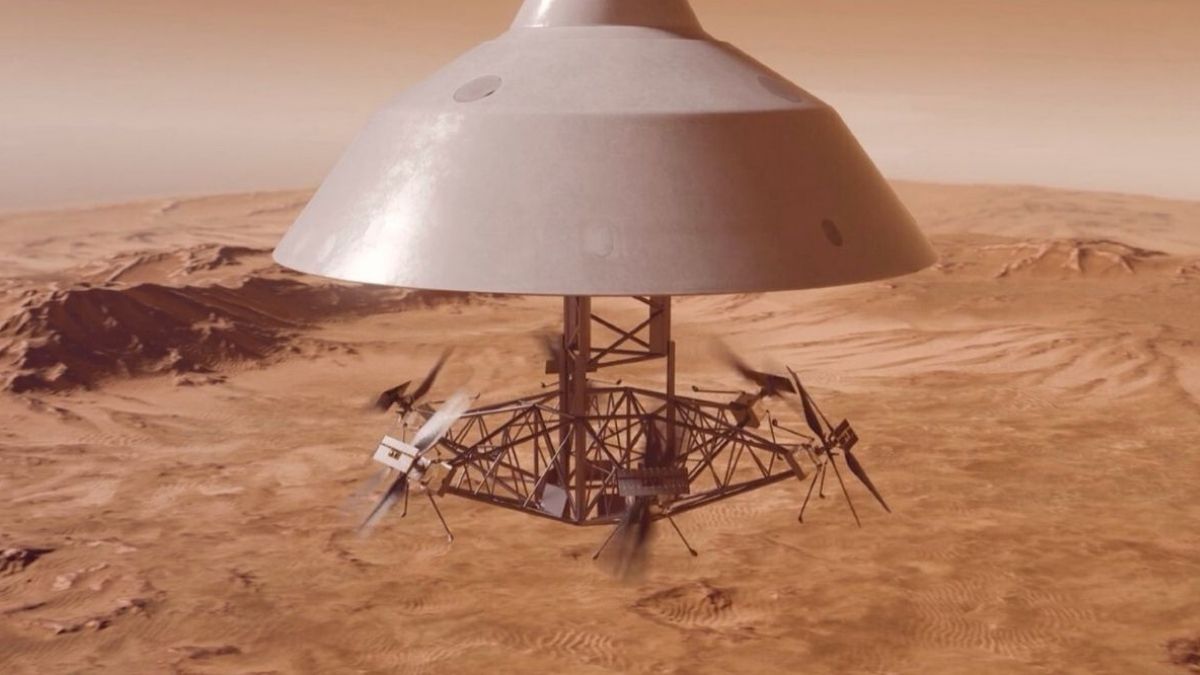- By Sakshi Srivastava
- Fri, 25 Jul 2025 05:30 PM (IST)
- Source:JND
Skyfall NASA: Building on the historic success of Ingenuity—the first aircraft to achieve powered flight on another planet—NASA is charting a bold new course with Skyfall, a conceptual mission featuring six next-generation helicopters designed to transform Mars exploration. Developed in collaboration with NASA’s Jet Propulsion Laboratory (JPL), Skyfall represents a significant technological leap.
The mission envisions a fleet of six autonomous helicopters working together to survey Mars with unprecedented speed, agility, and precision, offering crucial support for both robotic and future human missions.
We made history with Ingenuity, the first powered flight on another planet. Now, we’re ready to do it again. Introducing Skyfall: a potential future Mars mission concept developed with @NASAJPL for next-gen Mars Helicopters to help explore resources, scout potential landing… pic.twitter.com/fiLpvJs7jD
— AV (@aerovironment) July 24, 2025
Why Helicopters, And Why Now?
Ingenuity’s initial 2021 flight proved that controlled, powered flight was feasible in the thin Martian atmosphere. Since then, it has completed dozens of successful flights, collecting valuable data and redefining the scope of aerial exploration. Skyfall builds directly on that legacy. The new helicopters are expected to scout rugged and previously inaccessible terrains, identify valuable scientific sites, and locate critical resources such as water ice, which is vital for future human survival on Mars. They will also help map safe landing zones and provide real-time, high-resolution data to mission controllers, vastly improving situational awareness and operational efficiency. The helicopters will provide real-time, high-resolution data to mission controllers. (Image Source: AeroVironment)
The helicopters will provide real-time, high-resolution data to mission controllers. (Image Source: AeroVironment)
How Will Skyfall Work?
Each of the six helicopters in the Skyfall mission will be equipped with advanced sensors, navigation systems, and communication tools. Working in tandem, the aerial fleet will operate like a mobile drone network, surveying large swaths of terrain far faster than ground-based rovers can. This coordinated system will support a variety of mission objectives:
1. Scouting: Rapid reconnaissance of unexplored or dangerous areas.
2. Logistics: Assisting future missions with aerial delivery or habitat identification.
3. Mobility Testing: Demonstrating key technologies for surface mobility that could later be scaled for human use.
ALSO READ: Breakfast In NYC, Lunch In London? NASA’s X-59 Jet Could Get You There In Half The Time
Skyfall is still in the conceptual and developmental stages, but its promise is already reshaping how NASA envisions Mars exploration. By focusing on versatility, speed, and reach, Skyfall could help lay the groundwork for a sustained human presence on the Red Planet.
ALSO READ: Everything You Need To Know About NASA & SpaceX’s Crew-11 Mission
Skyfall is not just a technical experiment—it’s part of a larger strategy to prepare for human landings on Mars, projected for the 2030s. Its role in identifying safe habitats, mapping out resource-rich zones, and building a real-time understanding of Martian geography could be critical in making human missions both safer and more efficient.

